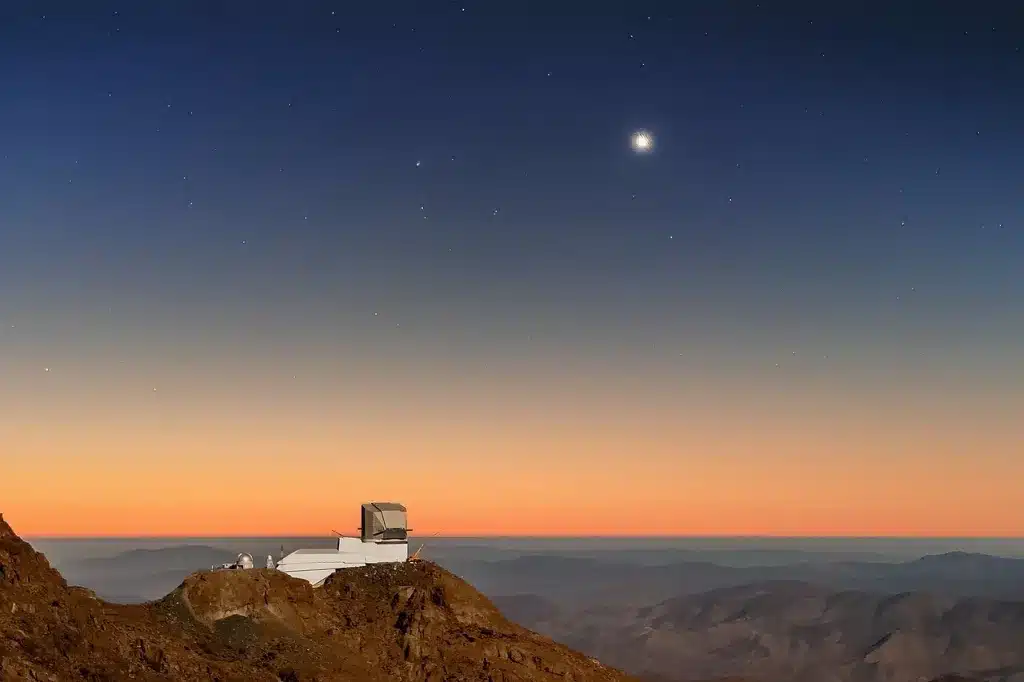Vera C. Rubin Observatory: A New Era in Astronomy

The Vera C. Rubin Observatory, currently under construction on Cerro Pachón in Chile, is set to make a significant impact on the field of astronomy. This groundbreaking facility is preparing to launch its decade-long Legacy Survey of Space and Time (LSST) this year. The LSST aims to detect millions of Type Ia supernovae, often called “vampire stars” due to their unique ability to siphon material from nearby stars. The data collected during this survey is expected to provide unprecedented insights into dark energy, the mysterious force driving the universe’s accelerating expansion. As the observatory gears up for its ambitious mission, the scientific community eagerly anticipates the wealth of information it will uncover.
Significance of Type Ia Supernovae in Measuring Cosmic Distances
Type Ia supernovae play a crucial role in our understanding of the universe. These explosive events occur when white dwarf stars reach the end of their life cycle. Their light output is remarkably consistent, making them effective “standard candles” for measuring cosmic distances. By analyzing the brightness and color of these supernovae, astronomers can determine how far away they are. This information, combined with data from their host galaxies, allows scientists to map the universe’s expansion over time.
Anais Möller, a researcher with the Rubin/LSST Dark Energy Science Collaboration, emphasizes the importance of the observatory’s work. The LSST will generate a diverse sample of Type Ia supernovae from various distances and galaxy types. This diversity will enable astronomers to gain a broader understanding of these stellar explosions and their behavior. The ability to study supernovae across different cosmic epochs will enhance our knowledge of the universe’s expansion and the role of dark energy in shaping it.
Mechanisms Behind Type Ia Supernovae
Understanding the mechanisms that lead to Type Ia supernovae is essential for interpreting their significance. These supernovae originate from white dwarf stars, which form when sun-like stars exhaust their nuclear fuel. The remnants of these stars are dense, collapsed cores that can accumulate material from a companion star in a binary system. When a white dwarf reaches a critical mass, known as the Chandrasekhar limit (approximately 1.4 solar masses), it undergoes a catastrophic explosion, resulting in a Type Ia supernova.
These explosions are both powerful and unpredictable, making long-term observation challenging. While they occur frequently throughout the universe, their timing cannot be easily predicted. This unpredictability adds to the excitement of the LSST, as the observatory will continuously monitor the night sky for these transient events. By capturing a wide range of Type Ia supernovae, researchers hope to unlock new insights into their formation and the underlying physics driving these spectacular explosions.
Advancing Dark Energy Research
The Vera C. Rubin Observatory is poised to revolutionize our understanding of dark energy. Since its discovery in 1998, dark energy has remained an enigma, constituting about 68% of the universe’s energy and matter. The LSST will produce extensive data that allows researchers to refine models of cosmic expansion. By observing the universe’s expansion at different cosmic epochs, scientists can determine whether dark energy’s influence has remained constant or evolved over time.
This research is critical for understanding the fate of the universe. If dark energy’s properties change, it could have profound implications for cosmology. The data generated by the LSST will provide a clearer picture of how dark energy interacts with the universe, potentially leading to new theories and discoveries. As researchers analyze the information collected, they hope to answer fundamental questions about the nature of dark energy and its role in the cosmos.
Preparing for a Data Avalanche
The LSST is expected to generate an overwhelming amount of data, with nightly scans of the southern hemisphere producing up to 20 terabytes daily. This influx of information will issue millions of alerts to astronomers around the world. To manage this data avalanche, sophisticated software systems are being developed. These systems will identify transient events like supernovae and kilonovas, ensuring that researchers can focus on the most significant discoveries.
Anais Möller and other scientists involved in the project emphasize its transformative potential. They describe the LSST as a generational leap in astronomical science. The ability to monitor the night sky continuously will open new avenues for research and collaboration. As the observatory prepares for its launch, the excitement within the scientific community continues to grow. The Vera C. Rubin Observatory is set to change our understanding of the universe in ways we have yet to imagine.
Observer Voice is the one stop site for National, International news, Sports, Editor’s Choice, Art/culture contents, Quotes and much more. We also cover historical contents. Historical contents includes World History, Indian History, and what happened today. The website also covers Entertainment across the India and World.
Follow Us on Twitter, Instagram, Facebook, & LinkedIn

